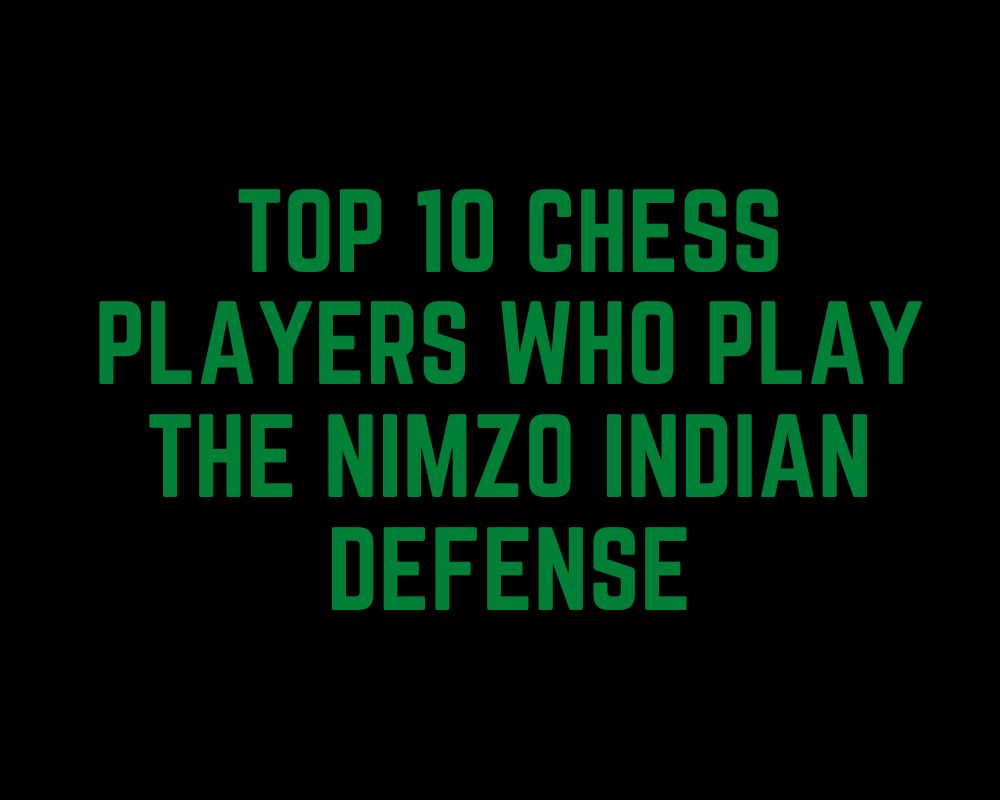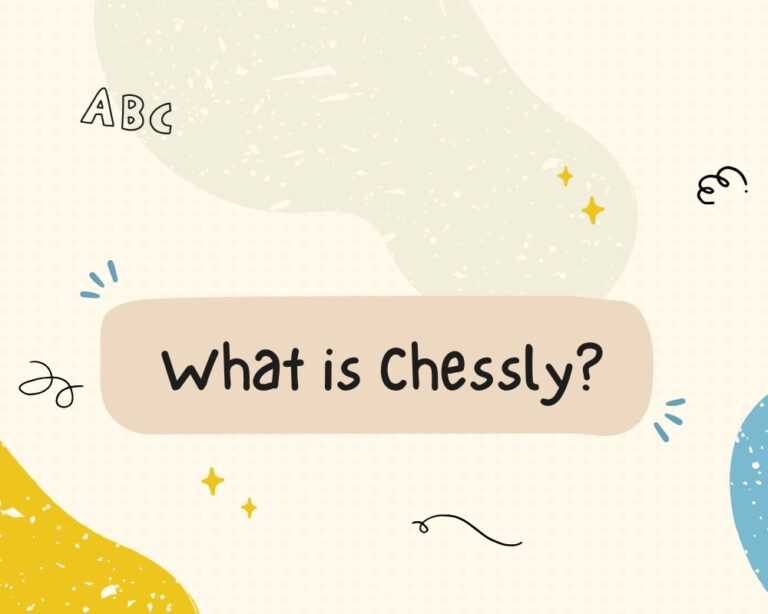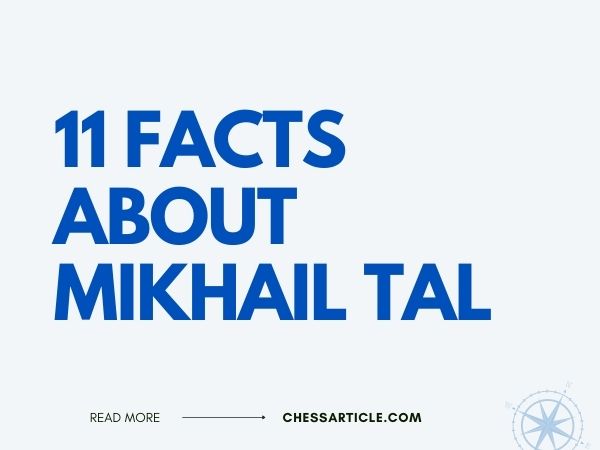Top 10 Chess Players Who Play the Nimzo Indian Defense
The Nimzo Indian Defense is a chess opening played by Black. It’s considered a “hypermodern” defense involving a quick fianchetto of the black king’s-bishop, combined with d6. Black allows White to build a strong pawn center, only later hitting back with moves like e5 or c5.
The Nimzo-Indian Defense was first played by Aron Nimzowitsch, a Russian grandmaster who lived in the early 20th century. He was a pioneer of hypermodern chess, and the Nimzo-Indian Defense is one of his most famous contributions to the game.
The Nimzo-Indian Defense is a versatile opening that can be used against a number of different white openings. It’s a good choice for players who want to avoid long theoretical battles, as there are many different ways to play the Nimzo-Indian.
One of the most popular ways to play the Nimzo-Indian Defense is with the 4. Qc2 variation. In this variation, Black allows White to build a strong pawn center with e4 and d4, only later hitting back with moves like c5 or e5. This variation was first played by World Champion Magnus Carlsen and has since been adopted by many other top players.
The Nimzo-Indian Defense is a complex opening with a lot of different variations. If you’re looking for an opening that will give you a chance to outplay your opponent, the Nimzo-Indian is a good choice.
In our last blog, we have seen the best chess books and courses to learn about Nimzo Indian Defense. In this blog, let’s see the top 10 chess players who played Nimzo Indian Defense.
1-Aron Nimzowitsch

Aron Nimzowitsch was the pioneer of building Nimzo Indian Defense. In fact, Nimzo is the name taken from his surname, Nimzowitsch.
Aron Nimzowitsch was a Latvian chess player who was born in Russia in 1886. He is considered to be one of the most influential chess players and theorists of all time.
He was a master of the strategic and positional game and is known for his works on chess strategy such as My System and Chess Praxis.
Nimzowitsch was also a leading figure in the development of the hypermodern school of chess which advocated for a more flexible approach to chess.
He won many prestigious tournaments throughout his career including the Carlsbad 1929 tournament which is considered to be one of the strongest tournaments of all time.
Nimzowitsch died in 1935 but his legacy continues to influence chess players and theorists today.
2-Samuel Reshevsky

Samuel Reshevsky (1911-1992) was a Polish-American chess grandmaster who became one of the strongest players in the world during the 1930s and 1940s.
He was born in Warsaw, Poland, and began playing chess at the age of four. When he was eight years old, he defeated a leading Polish master in a game. He moved to the United States in 1920 and became a naturalized citizen in 1928.
In 1933, at the age of 22, Reshevsky defeated Alexander Alekhine, the world champion, in a game. He won the U.S. Championship eight times between 1936 and 1951. He also won numerous other tournaments during his career.
During the 1950s and 1960s, Reshevsky gave up competitive chess to focus on his career as an accountant.
He later returned to chess and won the U.S. Senior Championship in 1974. He died in 1992, at the age of 80.
3-Bobby Fischer

Bobby Fischer was an American chess player who became the World Chess Champion in 1972. He is widely considered one of the greatest chess players of all time.
Fischer was born in Brooklyn, New York, in 1943. His father, a German immigrant, taught him how to play chess when he was six years old. Fischer quickly became a chess prodigy, and by the age of 13, he had won the U.S. Chess Championship.
In 1972, Fischer defeated Soviet grandmaster Boris Spassky in a highly publicized match in Iceland, becoming the first American to win the World Chess Championship. His victory was seen as a Cold War victory for the United States.
Fischer’s success was short-lived, however. He became increasingly reclusive and paranoid, and in 1975 he refused to defend his title against Anatoly Karpov. He was stripped of his title, and he never played chess competitively again.
Fischer spent the last years of his life as a wanderer, living in various countries and eking out a living through chess exhibitions and occasional television appearances. He died in 2008 at the age of 64.
4-GM Bent Larsen

Bent Larsen was born on March 4, 1935, in Tilsted, Denmark. He was a Danish chess Grandmaster and one of the strongest chess players in the world during the 1960s and 1970s.
Larsen began playing chess at the age of five and won his first tournament at age 10. He became a national master at age 16 and a grandmaster at age 20, making him the youngest grandmaster in the world at that time.
Larsen’s first major victory was at the 1956 Portoroz Interzonal tournament, where he finished ahead of such players as Vasily Smyslov, Tigran Petrosian, and Paul Keres. He went on to win the 1957 World Student Team Championship with the Danish team.
Larsen’s greatest achievement came in 1966, when he won the Soviet Union Championship, defeating such strong players as Boris Spassky, Viktor Korchnoi, and Vasily Smyslov. This made him the first non-Soviet player to win the Soviet Championship, and earned him the title of “Honored Grandmaster of the USSR.”
Larsen continued to have success in the 1970s, winning the Danish Championship five times and the Interzonal tournament in Manila in 1976. He also won a number of strong invitational tournaments, including the Beverwijk Tournament in 1970 and the Hastings International Chess Congress in 1971.
Larsen retired from chess in the 1980s but remained active in the chess world as an author and commentator. He died on September 9, 2010, at the age of 75.
5-Yuri Averbakh

Yuri Lvovich Averbakh is a Russian and Soviet chess player and author. He was born on February 8, 1922, in Kaluga, Russia. Averbakh learned to play chess at the age of four and by the age of nine was good enough to beat his father.
He soon joined the Kaluga Chess Club, where he became friends with future World Champion Mikhail Botvinnik.
In 1938, Averbakh won the Moscow Championship for the first time. The following year, he won the Soviet Championship for the first time. He would go on to win the Soviet Championship four more times (1943, 1947, 1949, and 1955).
In 1952, Averbakh became the first Soviet player to qualify for the World Championship Candidates Tournament. He finished in last place, but the experience he gained was invaluable.
Averbakh has written over 50 books on chess, including a classic work on the endgame, Chess Endings: Essential Knowledge. He is also the author of a five-volume work on the history of chess, A History of Chess from Chaturanga to the Present Day.
Averbakh died on the 7th of May 2022 at the age of 100.
6-Mikhail Botvinnik

Mikhail Botvinnik was a Soviet chess player who was World Chess Champion for most from 1948 to 1963. He was born in Moscow in 1911 and died in 1995.
Botvinnik was a leading chess player for many years. He played in the World Chess Championship tournament in 1948, where he tied for first place with American player Samuel Reshevsky. In a playoff match, Botvinnik won the title of World Chess Champion.
He held the title until 1963 when he lost it to Tigran Petrosian. Botvinnik regained the title in 1965 but lost it again in 1969 to Vasily Smyslov. He became World Chess Champion for the third and final time in 1963 but lost the title in 1972 to Bobby Fischer.
Botvinnik was known for his logical and positional style of play. He was also an accomplished chess theorist and wrote a number of books on the game.
Botvinnik was a strong advocate for the inclusion of chess in the Olympic Games. He was successful in this endeavor, and chess has been an Olympic sport since 1988.
Botvinnik was also a respected computer scientist and was one of the first people to develop a chess-playing computer program. He was inducted into the World Chess Hall of Fame in 1999.
7-Oleg Romanishin

Oleg Anatolyevich Romanishin (born January 10, 1952) is a Ukrainian chess Grandmaster and former World Championship Candidate. He was a member of the Soviet team that won the gold medal at the 1981 Chess Olympiad.
Romanishin was born in Zhytomyr, in the Ukrainian Soviet Socialist Republic. He was educated at the Lviv Polytechnic Institute, from which he graduated in 1978. He later worked as an engineer in Lviv.
Romanishin won the Ukrainian Chess Championship in 1977, 1979, and 1980. He was a member of the Soviet team that won the gold medal at the 1981 Chess Olympiad in Nice, France.
He won the Leningrad Championship in 1984 and the Soviet Championship in 1985. He qualified for the 1986 Candidates Tournament but was again eliminated in the first round, this time by Artur Yusupov.
In 1987, Romanishin won the Ljubljana International tournament, ahead of such strong players as Vasily Smyslov, Jan Timman, and Mikhail Tal.
Romanishin emigrated to the United States in 1988 and settled in Denver, Colorado. He won the U.S. Open Chess Championship in 1990 and the Denver Open in 1992. He has also won several other tournaments in the United States.
8-Anatoly Karpov

Anatoly Karpov is a Russian chess Grandmaster and former World Champion. He was born on May 23, 1951, in Zlatoust, Russia.
Karpov began playing chess at the age of four and was soon recognized as a child prodigy. He became a Grandmaster at the age of 18 and won the World Chess Championship in 1975.
Karpov successfully defended his title against Viktor Korchnoi in 1978 and 1980. He lost the title to Garry Kasparov in 1985 but regained it in 1993 after Kasparov broke away from the World Chess Federation.
Karpov retired from competitive chess in 1996 but has continued to play in exhibition and rapid chess matches. He has also written several books on chess.
Karpov is also called one of the greatest chess defenders of all time.
9-Viswanathan Anand

Viswanathan “Vishy” Anand is an Indian chess grandmaster and the current World Chess Champion. He is widely considered one of the greatest chess players of all time.
Anand first learned to play chess at the age of six from his mother and was soon recognized as a child prodigy. He became the national chess champion of India at age fourteen and won the world junior chess championship in 1987. He earned the title of grandmaster in 1988.
Anand has won the World Chess Championship five times (2000, 2007, 2008, 2010, 2012), more than any other player in history.
Anand is known for his aggressive and imaginative style of play. He is a quick thinker and is able to calculate complex positions and several moves ahead. He is also known for his endgame technique, which has led to many of his victories.
Anand has been credited with popularizing chess in India and is considered a national hero there. He has also been active in promoting chess among children and has founded a chess school in Chennai.
10-Magnus Carlsen

Magnus Carlsen is a Norwegian chess grandmaster who is the current World Chess Champion, the highest-rated chess player in history, and the reigning World Rapid and Blitz Chess Champion.
Carlsen was born in Tønsberg, Norway, on November 30, 1990. His father taught him to play chess at the age of five. Carlsen became a grandmaster in 2004, at the age of 13 years, 148 days, making him the second youngest grandmaster in history at that time.
Carlsen is known for his aggressive, unorthodox style of play. He frequently employs prepared opening gambits, rare in modern chess, and is willing to sacrifice material to achieve an advantageous position.
His chess understanding, ability to calculate variants, and psychological strength allow him to play well in complicated positions where lesser players would be lost. Carlsen has an unusually high success rate in winning chess games and matches when playing with the black pieces.
These are the top 10 players who are experts in Nimzo Indian Defense Opening.





